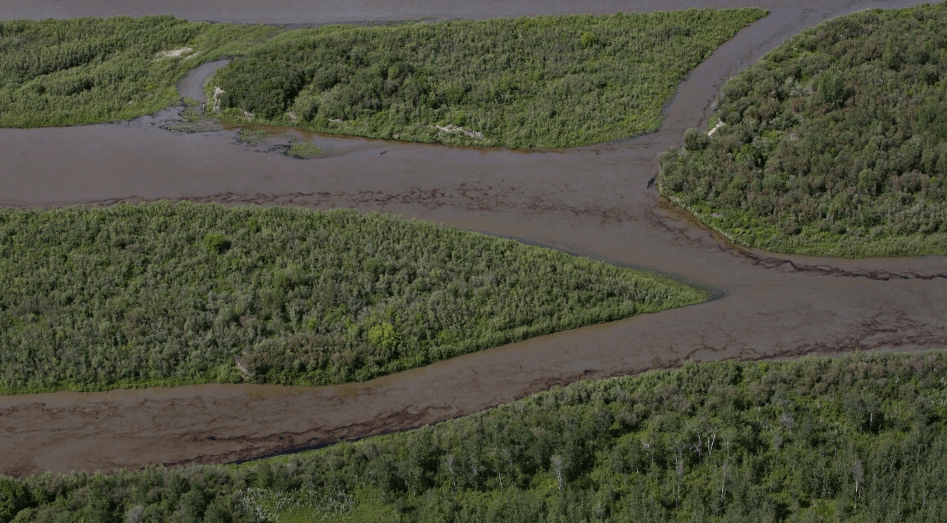
Fredericton – Prince Albert, Saskatchewan, has shut down its main drinking water supply intakes after a Husky Energy oil pipeline ruptured, spilling up to 250,000 litres of heavy oil and chemical diluent just 300 metres from the banks of the North Saskatchewan River.
The 40,000 residents of Prince Albert as well as 1,400 rural residents, who depend on the city’s supply of clean potable water for drinking, cooking, bathing, laundry and business operations, are facing severe water-use restrictions.
This latest oil spill serves as a stark reminder of the risks associated with building a massive oil pipeline, TransCanada’s Energy East, through New Brunswick, which would cross about 300 waterways in the western parts of the province in both the Saint John River and Miramichi watersheds.
Read our growing-list-of-oil-spills-in-Canada-and-the-United-States
The sheer volume of water crossings in NB increase the size of the risk and have the potential to impact waters of multiple uses, from drinking sources to recreational fishing rivers to sensitive lake and wetlands habitats. Many rivers, streams and brooks in the province will be crossed by the pipeline multiple times. Moreover, since NB is not crossed by an oil pipeline, it is doubtful that NB departments, municipal officials, or emergency crews have the equipment, personnel or experience to respond directly to an oil spill.
The spill from the Husky oil pipeline was first detected by a resident on July 22. According to media reports, the city of North Battleford, shut its water supply intake and switched to using groundwater to provide drinking water to its 14,000 residents. Provincial officials are telling residents to avoid fishing, boating or swimming in the river.
The spill comes just two weeks before the National Energy Board holds sessions in Saint John, NB on the Energy East Pipeline. In all, the Energy East pipeline would transport tar sands oil across nearly 3,000 rivers, streams and lakes from Alberta to New Brunswick, then transport the heavy oil by supertankers through the Bay of Fundy, the Gulf of Maine and down the Atlantic seaboard.
In her 2015 Fall Reports presented to Parliament, Federal Commissioner of the Environment and Sustainable Development, Julie Gelfand, said that half the pipeline projects her office examined hadn’t met the conditions placed on their approval.
-30-
More information:
• List of rivers, streams and lakes in NB crossed by Energy East pipeline route
• The North Saskatchewan River is 1,287 kilometres (800 mi), long, and drains an area of 122,800 square kilometres (47,400 sq mi)
• The Saint John River is about 673 kilometres (418 mi) long and drains an area of approximately 55,000 square kilometres (21,000 sq mi), of which slightly more than half is located in New Brunswick
• A recent report says the 4,600 km Energy East pipeline would put the drinking water of over 5 million Canadians at risk
• A growing list of oil spills in Canada and the United States

